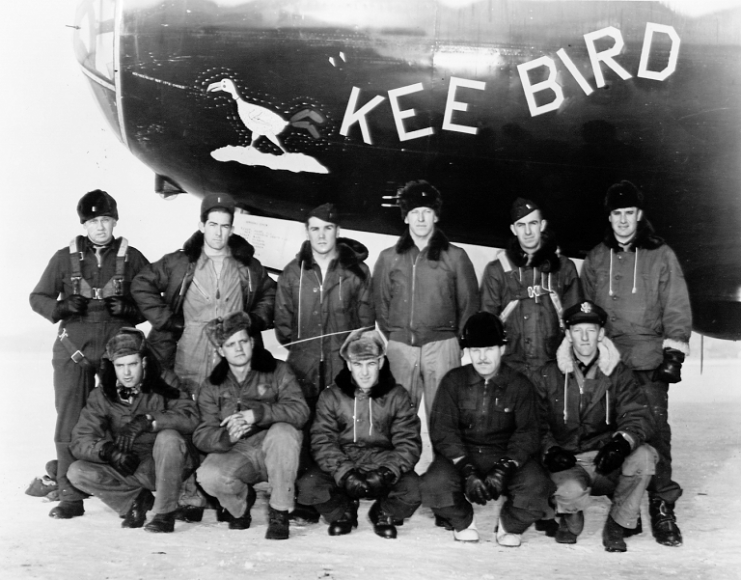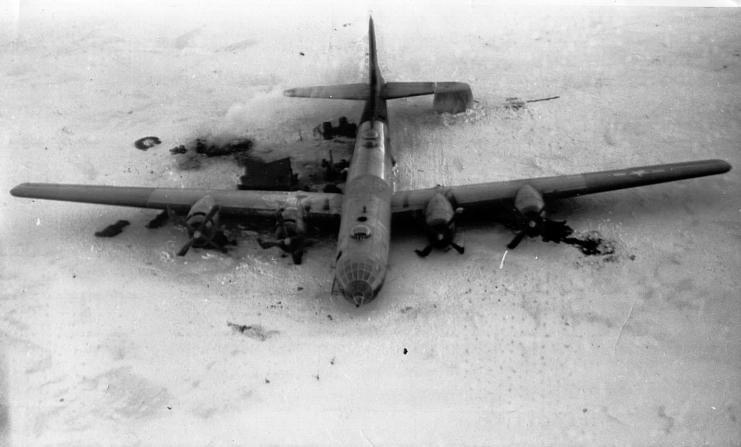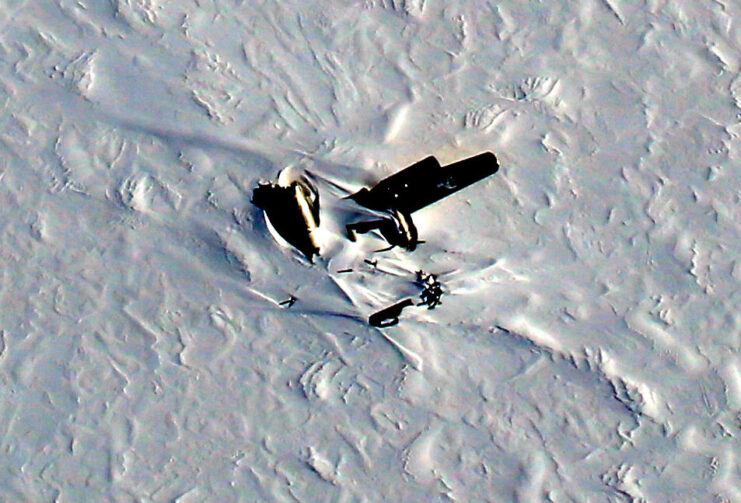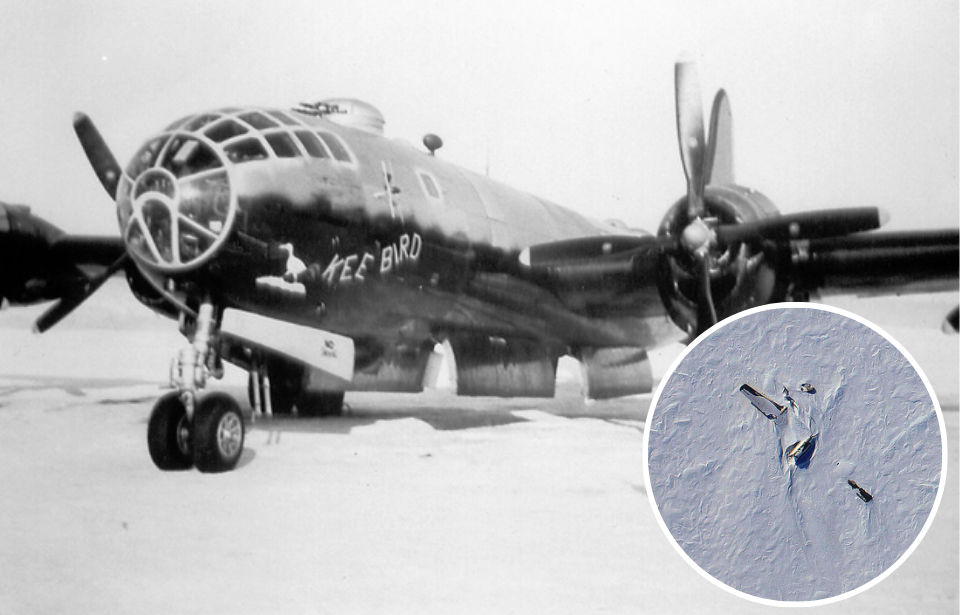On February 20, 1947, U.S. Air Force Lieutenant Vern H. Arnett and his 11-man crew embarked on what was supposed to be a routine—but classified—flight. This marked their seventh mission, all of which were shrouded in secrecy. Their objective was to fly over the Geographic North Pole and return safely to Ladd Field in Alaska.
The aircraft was equipped with enough fuel for a 26-hour round-trip flight under normal conditions. However, what transpired during this mission turned out to be far from ordinary.
An ill-fated mission

The mission was expected to last between 12-20 hours, with the Boeing B-29 Superfortress Kee Bird scheduled to land at Ladd Field at 10:00 AM. What wasn’t planned, however, was an emergency landing in northwestern Greenland— which is what happened.
On February 21, 1947, the Kee Bird, belonging to the 46th Reconnaissance Squadron, had to make an emergency landing on a frozen lake. The 46th Squadron was based at Ladd Field near Fairbanks, Alaska, and its flights were focused on improving polar navigation, mapping the Arctic, studying weather patterns, testing men and equipment in extreme Arctic conditions, and conducting long-range aerial photography for intelligence purposes.
Unofficially, the squadron was also on the lookout for any Soviet military activity in the remote Arctic.
After the crew safely evacuated, they were rescued, but the B-29 was left behind, abandoned in the Arctic tundra, where it remained untouched for 47 years.
Attempting to rescue the B-29 Superfortress Kee Bird

In July 1994, a team of aircraft restoration experts known as the Kee Bird Limited Liability Company, led by Darryl Greenamyer, arrived at the crash site of the B-29 Superfortress and were astonished to find it in surprisingly good condition.
Confident in their ability to restore the bomber to flying status, Greenamyer and his team brought in specialized tools and equipment. Over several months, they transported parts from U.S. military bases in Greenland to support the effort. During the summer, key components were delivered to the remote site, including an engine hoist, a replacement engine, four new propellers, fresh tires, and even a bulldozer to help clear and prepare the area.
Their goal was to get the Kee Bird airworthy, take off from the frozen lake where it had crash-landed, and fly it to Thule Air Force Base in Greenland for further repairs—eventually returning the aircraft to the United States. However, severe Arctic weather forced the team to leave before completing the restoration.
It wasn’t until until May 1995 that Greenamyer and his team were able to return and resume the ambitious restoration project.
B-29 Superfortress Kee Bird becomes engulfed in flames

The repairs Darryl Greenamyer had started the previous year were finally complete, and on May 21, 1995, the B-29 Superfortress known as Kee Bird was ready for takeoff from the frozen lake.
The team used a bulldozer to carve a temporary runway from the ice and snow. With the engines running and turbines spinning, everything was set—until they noticed a fuel leak in the auxiliary power unit’s tank. Gas was spilling into the fuselage, and before long, a fire soon engulfed and quickly spread across the aircraft.
The crew tried to put out the flames, but it was no use. The fire tore through the fuselage and burned the tail as well. The damage was so severe that Greenamyer and his team were forced to abandon their mission to recover the B-29.
More from us: A Boeing B-29 Superfortress Carrying An Atomic Bomb Once Crashed In California
At the time, many believed the aircraft would sink into the lake once the ice melted in spring. But surprisingly, the Kee Bird still sits atop the ice to this day.
